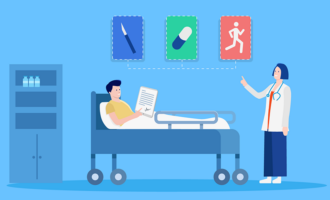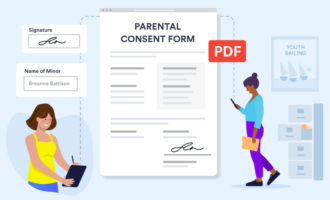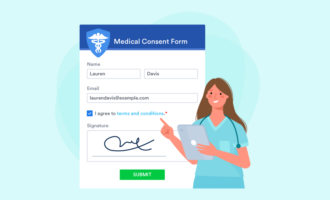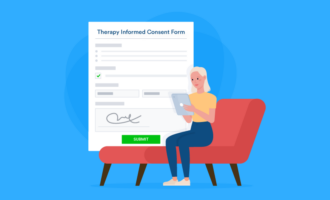Most patients don’t think of themselves as healthcare experts. Doctors understand illness better than they do. Physical therapists know more about how to alleviate symptoms, and nurses have more skill administering treatment. But only patients know how they feel. They live the experience of their bodies, while physicians rely on second-hand knowledge about this crucial subject.
Patients know other things doctors can only guess at, such as their own health goals and preferences. One person may prefer a visible wart over surgery, while another can’t wait to have a blemish removed. These unique perspectives make patients an indispensable part of their own healthcare teams.
Patient participation is the main idea behind shared decision-making in healthcare — a treatment model that places patients and physicians on more equal footing. Within this framework, doctors don’t decide on their own what’s best for patients. The patient and the providers pool their knowledge, have a conversation, and agree on what comes next.
The origins of shared decision-making in healthcare
Shared decision-making first appeared in clinical practice guidelines in the 1980s and ’90s in response to a prevailing top-down approach to medical treatment. But despite the growth of this and other patient-centered care standards, many healthcare systems haven’t eliminated the impression that providers are patronizing their patients.
“Often, healthcare providers share little information with patients, making all the decisions for them,” says Joseph Salim, DMD, owner and founder of Sutton Place Dental Associates. “It is as though patients were not sophisticated or educated enough to understand the nuances of their health issues. Or healthcare providers feel that explaining or educating patients will take too much time and effort.”
In a 2012 study, healthcare providers asked less than half of breast cancer patients about their own treatment preferences. And in a 2010 study, only 34 percent of candidates for colon cancer screening got the chance to weigh in.
It gets worse. “These problems still represent a public health issue,” Salim says. “They are often more exaggerated when treating lower-income patients or those who don’t speak English well.”
How shared decision-making leads to better health outcomes for patients
According to researchers, shared decision-making improves patient knowledge, confidence, and participation while reducing conflict with physicians — benefits that are even stronger for patients with lower literacy rates and socioeconomic status.
Patient participation seems to improve outcomes for everyone. The 2010 study referenced above, for instance, also showed that patients who contributed to discussions about their options were more confident in their choices than those who hadn’t.
“Shared decision-making allows you to build a strong relationship and trust between patients and healthcare providers,” Salim says. “It enables healthcare practitioners like me to put themselves in the patient’s shoes and see the situation from their perspective. Finally, it creates a situation where the patient can feel responsible and take ownership of the decision-making process.”
When physicians don’t make an effort to include patients in healthcare decisions, those patients score worse on physical and mental health tests, skip certain prescriptions, and spend more time in the emergency room.
How to practice shared decision-making in healthcare settings
How should physicians incorporate shared decision-making in their treatment plans? For an easy introduction, they can ask patients about their preferences. According to Salim, though, comprehensive reform will require more action.
“For shared decision-making to be effective, healthcare providers need to establish strong communication with patients, build trust, and continuously see the process from the patient’s side,” the dentist says. “Can the provider sincerely say that, if they were to reverse roles, he or she would be happy and content with the amount of information at hand? If not, the practitioner needs to take the necessary time and measures to fully explain all treatment options to the patient, clearly and verbally.”
A doctor may say, “We already collect informed consent.” Informed consent can support shared decision-making, but it’s not enough to hand out an informed consent form and proceed with treatment, Salim says. While informed consent is an important part of patient-centered care, physicians shouldn’t assume that patients understand everything they read — or that they read the fine print at all.
“These documents are essentially there to protect us, the caregivers, from potential lawsuits,” Salim says. “To truly establish trust and build a bond with patients, providers need to go above and beyond what the law requires. Signed consent forms are certainly required, but they are by no means sufficient.”












Send Comment: